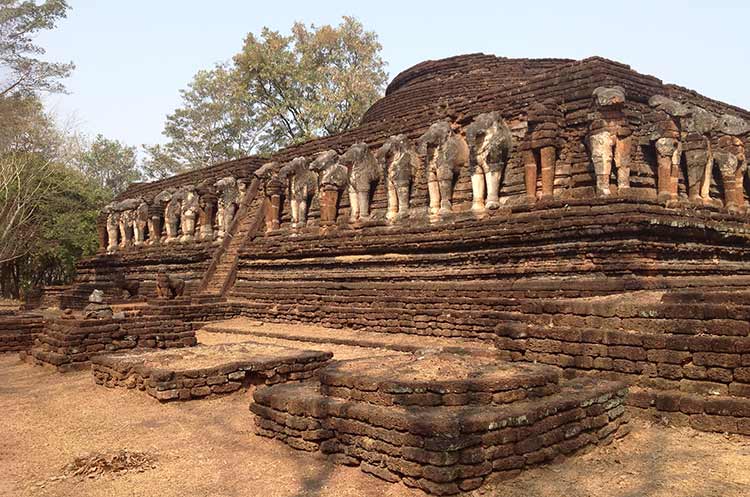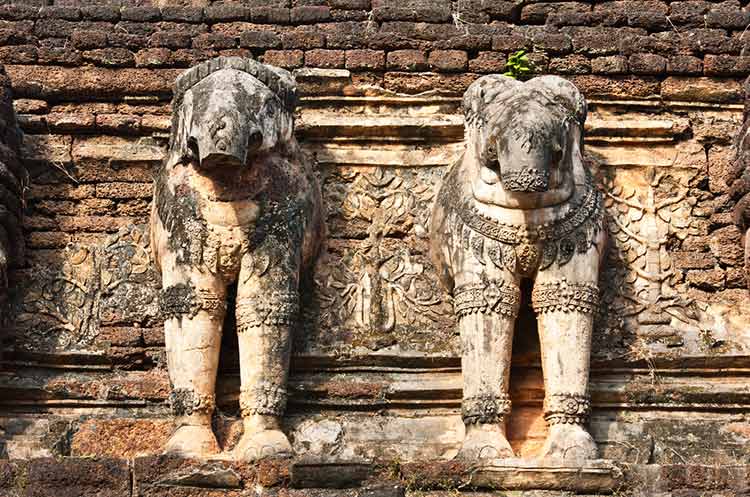
Wat Chang Rop
“Temple surrounded by elephants”
The Wat Chang Rop is a temple founded in the 15th or 16th century. It is located on top of a hill in the Aranyik area of Kamphaeng Phet Historical Park, North West of the Wat Singha. Its name translates to “temple surrounded by elephants”.
The temple is known for its imposing chedi standing on a base surrounded by statues of elephants that seem to carry the chedi on their backs. Other structures on the grounds include a viharn standing on an elevated base, an ubosot and numerous subsidiary chedis.
The Wat Chang Rop’s laterite structures are aligned on an East West axis. In front of the temple is a large pond, which was originally a quarry where laterite blocks were excavated used as construction material for the temple. The quarry was later converted in a water reservoir. East of the pond were two small chedis.
Viharn, the assembly hall
Directly behind the pond is the viharn, the assembly hall. The large hall standing on a high base had entrance porches at the back and at the front. Merely the pillars and the raised pedestal that supported the principal Buddha image remain today.
Singhalese style “elephant encircled chedi”
The Wat Chang Rop’s most important structure was its imposing chedi. The chedi stood on a well preserved square base, each side measuring 31 meters long, surrounded by 68 elephant statues protruding out of the structure. The Sukhothai style elephants seem to carry the chedi on their backs. While most of the laterite stuccoed sculptures are badly damaged, the fine decorations still shows on some of them. The space between the elephants was adorned with reliefs of floral designs, of which nothing is left.

A very steep stairway at each of the four cardinal directions leads to the large platform on top of the base, at the center of which stood the chedi. Flanking the bottom of each stairway was a pair of lion statues and guardians. The outline of a few of the statues that were covered with stucco can still be made out. Surrounding the platform is a brick wall with entrance archways at the center and small chedis at the four corners.
At the center of the platform stood the chedi, which has collapsed. Little more than the octagonal base and some of the lower receding circular tiers is left of what is believed to have been a bell shaped chedi in Singhalese style. The reliefs of Buddhist depictions that adorned the octagonal base have disappeared. The Singhalese style bell was topped with a tapering finial. Buddhist devotees used to walk the platform circling the chedi in a clockwise direction to make merit. Surrounding the principal chedi was a large number of subsidiary chedis, of which only the base remain today.
Similar chedis
During the Sukhothai era many of these “elephant encircled chedis” were built, like the Wat Chang Lom and Wat Sorasak in Sukhothai and the Wat Chang Lom in Si Satchanalai.
Ubosot
Away from the other structures in the Northeast corner of the temple complex stood a small ubosot or ordination hall, surrounded by sema stones marking the sacred area. The high base and lower part of the columns remain, as well as the pedestal that supported a seated image of the Buddha.